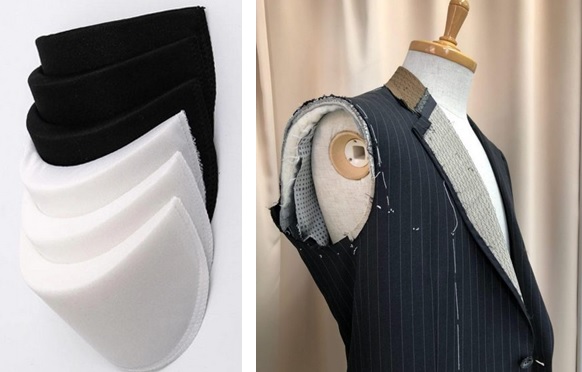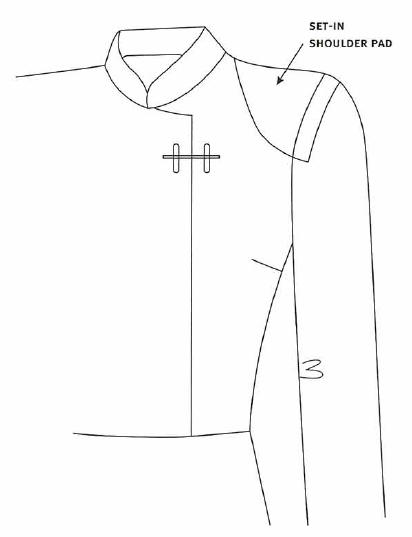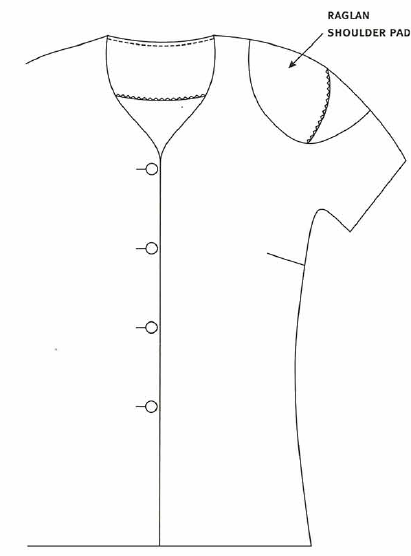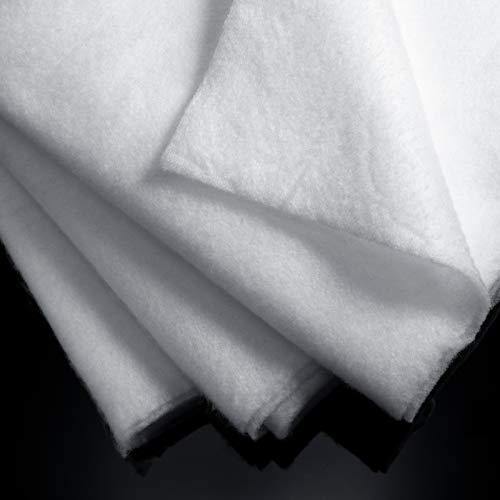What are Shoulder Pads?
Shoulder pads are a type of fabric covered padding used in men’s and women’s clothing to give the wearer the illusion of having broader and less sloping shoulders. In men’s styles, shoulder pads are often used in suits, jackets, and overcoats, usually sewn at the top of the shoulder and fastened between the lining and the outer fabric layer. In women’s clothing, their inclusion depends on the fashion taste of the day.

Occasionally garments, particularly shirts, sweaters, suits, jackets and dresses, can benefit from extra shaping. Shoulder pads are generally used for this function and are secured to the inside portion of the garment at the shoulder region. Shoulder pad is generally made of foam and covered with fabric. For unlined garments, a shoulder pad covered with nylon is commonly used, and for lined garments there is no necessity to cover the pad. The pads for unlined garments can be secured by means of a series of tacks made by a blind stitch machine. In case of tailored garments, the shoulder pad could be sewn in or fused to the shoulder area with thermoplastic resin positioned on the top layer of the pad.
Shoulder pads are important for adding shape and structure to a garment, and they affect the way the garment fits, hangs, and looks on the body. Shoulder pad comes and go in fashion, but a coat or jacket always looks better with a narrow, 1/4 inch shoulder pad squaring the shoulders. Shoulder pads provide a well-made, finished looking garment. Shoulder pads are available in covered or uncovered forms, these pads come in many sizes and thicknesses from 0.25 inch to 1.5 inches.
Shoulder pads are made from a variety of materials, including cotton or polyester batting, and foam. They can be covered in lightweight lining fabric or tricot knit, or they can be purchased uncovered, to cover with fabric to coordinate with the garment.
Shoulder pads should never be visible from pads improve the look of the garment and need to be positioned and inserted properly to be effective.
Types of Shoulder Pads:
There are two types of shoulder pads:
- Set-in shoulder pad
- Raglan shoulder pad
1. Set-in shoulder pad:
A set-in shoulder pad has a long, straight edge that corresponds to a garment’s sleeve seam, and its thickest part is along this edge. It creates a sharper line between the shoulder and the sleeve and gives a crisper, structured look.

Set-in pads that are specifically designed for jackets and coats are called tailor’s shoulder pads and are generally larger in front than in back, in order to fill in the hollow of the chest below the shoulder. The sleeve edge of the tailor’s pad is crescent-shaped to follow the shape of the top of the armhole. These pads have an extra layer of hair canvas or buckram covering the padding and are never covered with fabric because the garment’s lining will cover the pad.
Smaller pads used in dresses and less tailored jackets are symmetrically balanced, front and back.
2. Raglan shoulder pad:
The raglan shoulder pad softly rounds off the point of the shoulder and helps fill in the area of the sleeve cap. Raglan shoulder pads are oval in shape, rounded at the shoulder edge, and slightly molded to fit over the shoulder point. The thickest part of the raglan pad is in the center of the pad.

Uses of Shoulder Pads:
Shoulder pads are used in clothing to enhance and define the structure of the shoulder area, adding a stylish and tailored look to garments. They are commonly used in blazers, jackets, and formal attire. Shoulder pads create a more angular silhouette, balancing proportions and imparting a powerful, confident appearance. In the world of fashion, shoulder pads experienced heightened popularity in the 1980s, reflecting a bold and assertive aesthetic. Beyond aesthetics, shoulder pads also serve functional purposes, offering support and shape to the garment, particularly in women’s clothing. While their prominence has fluctuated with evolving fashion trends, shoulder pads remain a key element in achieving certain styles and adding a touch of sophistication to various outfits.
What is Wadding?
Wadding or batting is an insulation layer normally used in quilted fabrics between a patchwork top layer and a backing material of bottom layer. The fibers such as cotton, wool, polyester and its blends are commonly used for batting. It is frequently made up of a variety of fibers held together using several methods. The common techniques for holding the fibers together are-
a) Bonding:
In this method, the fibers are bonded using thermal or resin bonding. Thermal bonding has a mix of low melt polyester fibre and normal polyester to hold it together. Fibers such as polyester, cotton and wool are used in resin-bonded batting.
b) Needle-punching:
In this method, the fibers are interlocked mechanically by means of punching them with needles, which make the batting denser as well as stronger while being lower loft.
c) Scrim:
It is a low-weight fabric, which is needle-punched into the batting with the objectives of stabilizing the batting, enhancing loft and strength of batting and to avoid stretching and distorting.

Uses of Wadding in Clothing:
Wadding is used in clothing for insulation, volume, and comfort. Commonly found in winter wear like jackets and coats, it traps and retains heat close to the body. In fashion industry, it adds a trendy puffy appearance to garments, particularly in items like puffer jackets. Wadding also plays a crucial role in quilting, sandwiched between fabric layers for thickness and a quilted look. Beyond fashion industry, it serves in protective gear, providing padding in areas like shoulder pads or knee pads. Crafters use it for DIY projects, and it finds applications in costumes, bedding, and even noise reduction in specialized clothing.
References:
- Apparel Manufacturing Technology by T. Karthik, P. Ganesan, and D. Gopalakrishnan
- Garment Manufacturing Technology Edited by Rajkishore Nayak and Rajiv Padhye
- Professional Sewing Techniques for Designers by Julie Cole and Sharon Czachor
- Classic Tailoring Techniques: A Construction Guide for Women’s Wear by Patricia Flaherty Meyers and Roberto Cabrera
